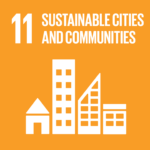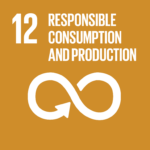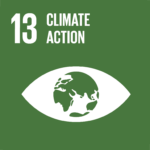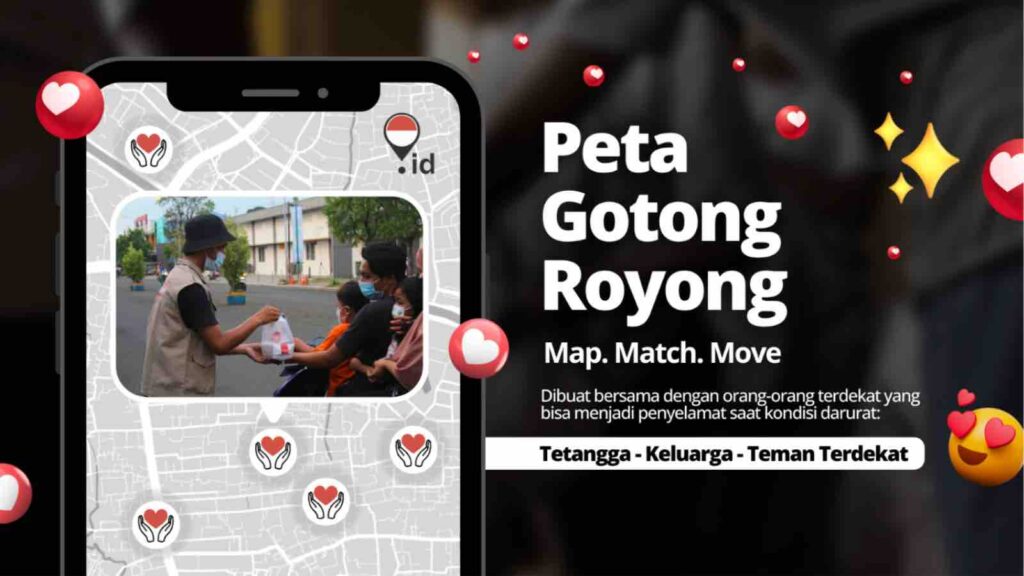Peta Gotong Royong (Mutual Aid Map) connects disaster victims with real-time assistance, achieving 70% faster response rates than conventional social media coordination.
JAKARTA, Indonesia — Indonesia launched a groundbreaking artificial intelligence platform on Saturday (June 21, 2025) that transforms centuries-old community mutual aid traditions into a digital disaster response system, promising to revolutionize how Southeast Asia’s most disaster-prone nation coordinates emergency relief.
RELEVANT SUSTAINABLE GOALS



The Peta Gotong Royong (Mutual Aid Map) platform connects disaster victims with assistance in real time, addressing critical gaps in humanitarian response while demonstrating how traditional cultural values can be enhanced through modern technology. Built upon PetaBencana.id, Southeast Asia’s largest disaster mapping platform since 2017, the new system achieved a 70% faster matching rate than conventional social media coordination during February 2025 flood trials.
Digital Innovation Meets Local Wisdom
Indonesia’s approach contrasts sharply with stalled international frameworks, drawing instead on “gotong royong”—the Indonesian tradition of community mutual assistance that has sustained villages through disasters for generations.
“Communities must be equipped to act when disaster strikes,” said Nashin Mahtani, Director of Yayasan Peta Bencana, the foundation operating the platform. “Peta Gotong Royong builds upon the region’s strong traditions of mutual aid by providing digital tools that match 21st-century challenges.”
The platform addresses a well-documented gap in disaster response: while formal relief systems often struggle to reach affected communities quickly, studies show most life-saving actions in the critical hours after disasters come from people already on the ground.
During emergencies, social media platforms typically become coordination hubs, but the volume of posts quickly becomes overwhelming, making it difficult to verify needs, prioritize responses, and ensure aid reaches those most in need.
Government Endorsement Signals Policy Shift
The National Disaster Management Agency (BNPB) has officially endorsed the platform, with Director of Logistics and Equipment Management Bambang Surya Putra emphasizing community participation in disaster response.
“In times of crisis, it is communities that act as first responders,” Putra said during the launch. “The Mutual Aid Map represents an important new form of collective action. It is leaderless, because we are all equal and we all work together to overcome the problems we face in our environments.”
The government backing represents a significant shift toward decentralized disaster governance, aligning with recent ASEAN frameworks on climate resilience that emphasize community-led initiatives.
Real-World Testing Validates Platform Effectiveness
Early implementation during Indonesia’s disaster-prone 2025 weather season has produced measurable results. Supriadi from the Indonesian Red Cross in Deli Serdang, North Sumatra, coordinated flood relief in March 2025 despite being hundreds of kilometers from the affected area in Padang Sidempuan.
“Although I was far away in Deli Serdang, I coordinated with my colleagues from the Indonesian Red Cross in Padang Sidempuan to submit a request for assistance through the Peta Gotong Royong feature,” Supriadi explained. “A few days later, my request was answered by a donor, and the flood victims were able to receive much-needed basic supplies, such as sanitary products for women.”
Indra Kurniawan, former Head of Disaster Management at Indonesian Red Cross Bogor and survivor of the 2022 Sukabumi Earthquake, emphasized the platform’s practical value for frontline responders.
“As a volunteer and community member who frequently responds directly to disaster sites, I truly understand the importance of fast and accurate information,” Kurniawan said. “It enables all stakeholders to easily identify unmet needs—whether it’s clean water, food, medicine—and respond more effectively.”
Technology Addresses Humanitarian Coordination Challenges
The platform operates through familiar interfaces including WhatsApp and mobile browsers, lowering technical barriers that often prevent community participation in formal disaster response systems.
Key features include real-time needs reporting where affected individuals can directly communicate requirements, a decentralized matching system connecting community members with local organizations, and open data transparency maintaining publicly accessible records of aid requests and fulfillment.
Zahrotul Ulya, Regional Executive Director of the Indonesian Family Planning Association in East Java, highlighted the platform’s capacity to address specific needs during disasters.
“The platform provides a tool to request a diverse set of needs including assistance for household needs, babies, children, and so on, providing a significant way to respond to specific needs during disasters,” Ulya stated.
Religious and Cultural Leaders Embrace Digital Mutual Aid
The platform has gained support across Indonesia’s diverse religious communities, with leaders emphasizing alignment between technological innovation and spiritual values.
I Nyoman Suartanu from the Indonesian Hindu Dharma Council reflected on the platform’s cultural resonance: “Mutual aid is rooted in our humanity—it requires sincerity, volunteerism, and the willingness to rise above ego for the greater good. The latest initiative of PetaBencana.id is not just a technological innovation; it is a moral call to unite across faiths and communities.”
Yasser Atmanegara, Deputy Secretary of Muhammadiyah Disaster Management Center Jakarta, praised the platform’s grounding in local wisdom while advancing technological capabilities. “This is a technological breakthrough grounded in local wisdom, the spirit of gotong royong,” Atmanegara said. “It helps cut bureaucracy, supports peer-to-peer response, and becomes a vital record of public participation in disaster response and recovery.
Established Platform Expands Proven Model
PetaBencana.id, the foundation platform launched in 2017, has already been used by millions of Indonesian residents for safety and navigation decisions during flood emergencies. The system has been adopted by the National Disaster Management Agency to monitor flood events and share emergency information with the public.
The platform’s track record includes partnerships with major technology companies and government agencies. Organizations including Google, Uber, and NASA’s Jet Propulsion Laboratory have utilized the system, while the Pacific Disaster Center, Red Cross, Office of Civil Defense Philippines, and Indonesian Meteorology, Climatology, and Geophysics Agency rely on its real-time data during disasters.
Government agencies have stated the system has revolutionized emergency response, particularly for under-funded and high-risk communities, by leveraging social media and instant messaging applications that are already familiar to users.
The platform reflects broader shifts toward decentralized disaster governance, particularly relevant as Southeast Asia faces increasing climate risks from sea-level rise, extreme weather events, and ecosystem disruption.
Regional Model for Climate Adaptation
The Indonesian platform’s emphasis on preserving cultural traditions while embracing technological solutions offers a model for other Southeast Asian nations facing similar climate challenges and governance constraints.
As global climate talks continue to struggle with political disagreements over funding mechanisms and responsibility sharing, locally-led initiatives like Peta Gotong Royong demonstrate alternative approaches to building climate resilience.
You may also be interested in :
As Climate Disasters Surge, Early Warning Systems Become Essential




